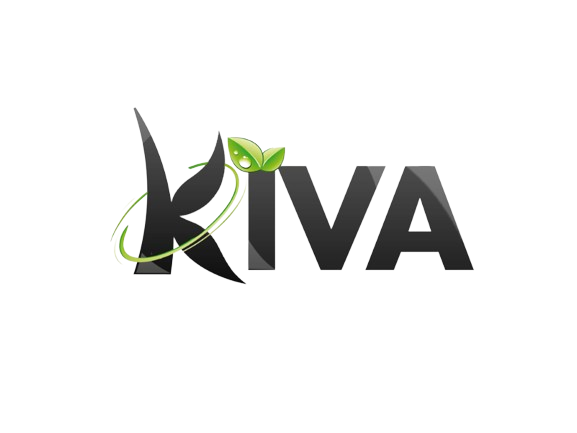Mortgage insurance is a type of insurance that covers the cost of a home loan if the borrower defaults on the loan. The cost of mortgage insurance typically varies depending on the lender and the type of mortgage that is being insured. There are a few ways to save money on mortgage insurance. The first is to shop around and compare rates. Different lenders may have different rates for mortgage insurance, so it is important to compare rates before choosing a lender. Another way to save money on mortgage insurance is to shop for a reduced premium policy.
A reduced premium policy is a type of policy that does not include vital insurance coverage, but instead pays the insurance company a fee. This fee is usually lower than the premium that would be charged for full insurance coverage. If you are considering a home loan, it is important to research the cost of mortgage insurance. By looking for ways to save on mortgage insurance, you can save money on the overall cost of a home loan.
Recommended: What is a jumbo reverse mortgage? What is a mortgage call report?
1. How to Save Money on Mortgage Insurance
Mortgage insurance is a policy that protects lenders against loss in the event that a borrower defaults on their home loan. The insurance is paid by the borrower and is typically required if the down payment is less than 20% of the home value. Mortgage insurance can be a costly addition to your monthly mortgage payments, but there are ways to reduce the cost.
Here are a few tips on how to save money on mortgage insurance:
1. Shop around for the best rates. Mortgage insurance rates can vary significantly from one lender to the next. It’s important to compare rates from multiple lenders to ensure you’re getting the best deal.
2. Make a larger down payment. The larger your down payment, the lower your mortgage insurance premium will be. If you can afford to put down 20% or more, you may be able to avoid mortgage insurance altogether.
3. Choose a shorter loan term. The shorter the loan term, the lower the mortgage insurance premium will be. A 30-year loan will typically have a higher premium than a 15-year loan.
4. Get rid of private mortgage insurance. If you have private mortgage insurance (PMI), you may be able to cancel it once you reach 20% equity in your home. This will lower your monthly payments and save you money over the life of the loan.
5. Refinance to a lower rate. If interest rates have dropped since you originally took out your loan, you may be able to refinance to a lower rate and save money on your mortgage insurance premium.
Mortgage insurance can be a costly addition to your monthly mortgage payment, but there are ways to reduce the cost. By shopping around for the best rates, making a larger down payment, choosing a shorter loan term, or getting rid of private mortgage insurance, you can save money on your mortgage insurance premium.
2. What is Mortgage Insurance?
When you take out a mortgage, your lender will require you to purchase private mortgage insurance (PMI) if you cannot put down a 20% down payment. PMI protects the lender in case you default on your loan.
While PMI is a common requirement for conventional loans, some government-backed loans do not require PMI. For example, with a Veterans Affairs (VA) loan, the Department of Veterans Affairs guarantees the loan, so PMI is not required. With a Federal Housing Administration (FHA) loan, the government insures the loan, so PMI is also not required.
If you are required to purchase PMI, it will add to your monthly mortgage payment. The amount you pay for PMI will depend on the size of your down payment, the type of loan you have, and the lender.
There are a few ways to avoid paying PMI. You can make a larger down payment, so that you do not need to purchase PMI. You can also refinance your loan after you have built up enough equity in your home.
If you do have to purchase PMI, there are a few ways to save money on the premium. You can ask your lender to cancel PMI when you reach 20% equity in your home. You can also shop around for a more competitive PMI premium.
When you are shopping for a mortgage, be sure to compare the total cost of the loan, including the interest rate, fees, and PMI. This will help you to find the best deal for your situation.
3. How Much Does Mortgage Insurance Cost?
Mortgage insurance is an insurance policy that protects lenders against losses that can result from borrowers defaulting on their home loans. Mortgage insurance can be either private or public, and is usually required when a borrower is unable to make a down payment of 20% or more.
The cost of mortgage insurance varies depending on the type of loan, the size of the down payment, and the borrower’s credit score. For example, borrowers with a credit score of less than 620 will generally pay a higher mortgage insurance premium than those with a score of 720 or higher.
Private mortgage insurance typically costs between 0.5% and 1% of the loan amount per year. For example, on a $200,000 loan with a 10% down payment, the borrower would pay $2,000 per year in mortgage insurance premiums.
Public mortgage insurance, such as the Federal Housing Administration’s (FHA) mortgage insurance program, typically costs between 1.5% and 2% of the loan amount per year. For example, on a $200,000 loan with a 3.5% down payment, the borrower would pay $3,500 per year in mortgage insurance premiums.
The cost of mortgage insurance can be a significant expense, especially for borrowers with a small down payment. Borrowers can save money on mortgage insurance by making a larger down payment, choosing a loan with a shorter term, or refinancing to a conventional loan once they have built up equity in their home.
4. How to Get Rid of Mortgage Insurance
Mortgage insurance is a necessary evil if you want to buy a home with a small down payment. It protects your lender in case you default on your loan, but it also protects you in case you can’t make your mortgage payments.
If you have private mortgage insurance (PMI), you’re probably paying for it every month. And you may be wondering, can I get rid of mortgage insurance?
The answer is maybe. It depends on a few factors, such as when you bought your home and what type of loan you have.
Here’s what you need to know about getting rid of mortgage insurance.
When Does Mortgage Insurance Go Away?
If you have a conventional loan, mortgage insurance is typically required if you make a down payment of less than 20%. It is also required if you refinance your home with a conventional loan and your loan-to-value (LTV) ratio is more than 80%.
For FHA loans, mortgage insurance is required for the life of the loan. If you have an FHA loan that was insured by the Federal Housing Administration (FHA), you may be able to get rid of mortgage insurance by refinancing it into a conventional loan.
You can also get rid of mortgage insurance on an FHA loan by selling your home or paying off your loan in full.
How to Get Rid of Mortgage Insurance
If you have a conventional loan and you want to get rid of mortgage insurance, you can refinance into a loan with a higher LTV ratio. For example, if you have a loan with an LTV ratio of 80%, you can refinance into a loan with an LTV ratio of 85%.
You can also get rid of mortgage insurance by selling your home or paying off your loan in full.
If you have an FHA loan, you can get rid of mortgage insurance by refinancing it into a conventional loan. You can also get rid of mortgage insurance by selling your home or paying off your loan in full.
What’s the Catch?
The catch is that you may have to pay for mortgage insurance even if you don’t
5. Mortgage Insurance Tips
Mortgage insurance is a necessity for anyone who doesn’t have a 20% down payment when they are buying a home. But it doesn’t have to be a budget buster. Here are 5 tips to keep the cost of your mortgage insurance down.
1. Get quotes from multiple mortgage insurance companies
When you are shopping for a mortgage, get quotes from multiple mortgage insurance companies. They all use different formulas to calculate your premium, so you will get different rates.
2. Make a larger down payment
The larger your down payment, the lower your mortgage insurance premium will be. If you can swing it, aim for a down payment of at least 10%.
3. Choose a shorter loan term
A shorter loan term will also lower your mortgage insurance premium. So if you can afford the higher monthly payments of a 15-year loan, you’ll save money in the long run.
4. Improve your credit score
Your credit score is a big factor in determining your mortgage insurance premium. So if you can improve your credit score before you apply for a loan, you’ll save money.
5. Shop around when it’s time to renew
When it’s time to renew your mortgage insurance policy, shop around again. Rates and formulas can change, so you may be able to find a better deal.



Leave a Reply